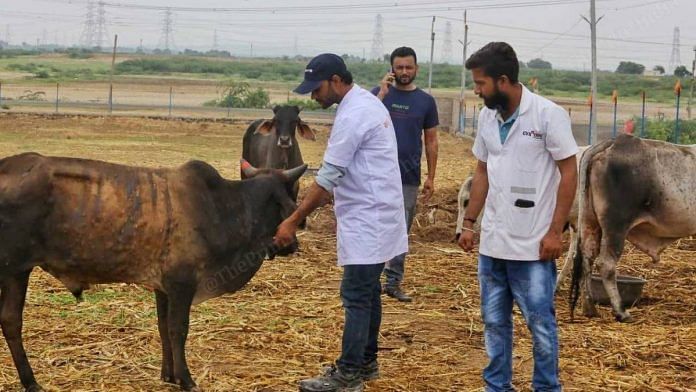Kutch (Gujarat): Haresh Thacker, deputy director of animal husbandry in Gujarat’s Kutch district, is a busy man these days. With thousands of cattle falling prey and succumbing to lumpy skin disease, a viral infection, he has been working through the weekend — keeping track of vaccinations and treatment across what is Gujarat’s largest district.
Just as he settles down for a few minutes to give an update on the situation to ThePrint, he receives a taluka-wise report of vaccination numbers for Sunday. His eyes flit through the document in his hand, even as speaks.
“We have been vaccinating 20,000 to 25,000 cows every day. More than 3.3 lakh have been vaccinated so far,” said Thacker.
Caused by a capripox virus, lumpy cow disease (LSD) affects both cows and buffaloes. In Gujarat, the outbreak has been reported more among cows, according to district officials.
The disease gets its name from the large, firm nodules that develop on the skin of cattle as a result of the disease. Depression, conjunctivitis and excess salivation are some other symptoms. Eventually, the nodules burst, causing the animals to bleed. There is currently no cure for the viral disease, and treatment mostly targets clinical symptoms. The vaccine being administered is the same as that for goatpox virus.
So far, the disease has been reported from at least 16 districts in Rajasthan and 20 in Gujarat. It has also spread to Punjab.
While an estimated 5,807 had succumbed to the disease by Thursday in Rajasthan and the number of infected animals had touched 1,20,782, in Punjab, over 400 head of cattle have reportedly died in a month and around 20,000 infected.
In Gujarat, the number of infected head of cattle stood at 55,950 last Tuesday, while the animal husbandry department pegged the number of deaths from the disease to just over 1,200 in the past month. However, volunteers at local camps, set up to take care of the diseased animals, told ThePrint last week that the number was much higher — possibly 20,000.
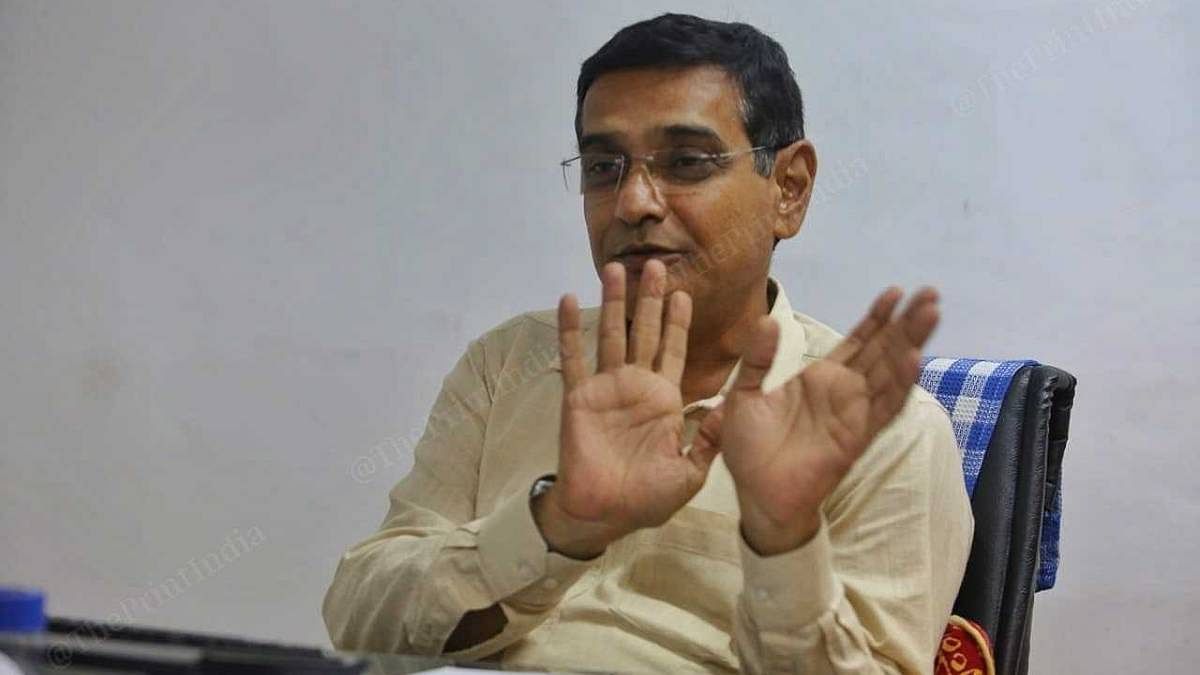
In Kutch, the crisis has been compounded by a shortage of staff and the long distances between villages.
With 22 of 36 district veterinary officers’ posts in the district lying vacant, the administration here has had to deploy veterinary doctors of milk cooperatives, as well as medical students from several institutes to put together 78 teams, which are monitoring the LSD outbreak in the district.
Kutch is among the worst hit districts, especially the town of Bhuj, said Thacker. “We have gotten immense support from the community. Administering the medicine does not take the doctor too much time. However, the care that needs to be given to the affected cows is a full-time job, and that is where the support of the volunteers has been invaluable.”

Around 200 veterinary doctors — including government staff, doctors from dairy cooperatives, researchers and students from medical colleges — have been deployed in the district. However, they are faced with the daunting task of attending to a cattle population of over 5.75 lakh, spread across 45,674 square kilometres, Thacker explained.
The ministrations include vaccination drives, treating cattle at isolation centres (for the infected) in cities and towns and attending to individual emergency calls from cattle owners in 939 villages and six municipalities.
Often the veterinary doctors also have to face scepticism from cattle owners, who are wary of the treatment. To counter this, physicians have been drawing parallels with the Covid pandemic to build awareness about the disease and the need for proper vaccination and treatment, said Thacker.
“The cattle roaming the city streets have been the worst affected. Eighty per cent of their stomach is filled with plastic. So they are not healthy to begin with. The cattle owned by families in villages have a better recovery rate,” he added.
Also read: In Kutch camps, sick cows gnash teeth, flies cover wounds, as they wait to die of lumpy skin disease
Isolation wards for infected animals, stray cattle worst hit
In the Pashu Dawakhana or veterinary dispensary in the district’s Anjar taluka, Dr Girish Parmar — deputed as the liaison officer for Anjar and Gandhidham — told ThePrint that five mobile vans have been deployed across the two talukas to attend to calls from villages, as well as the six gaushalas (cow shelters) and two isolation centres in the area.
Every morning, the mobile vans report at the dispensary to stock up on medicines and vaccines, before starting their rounds.
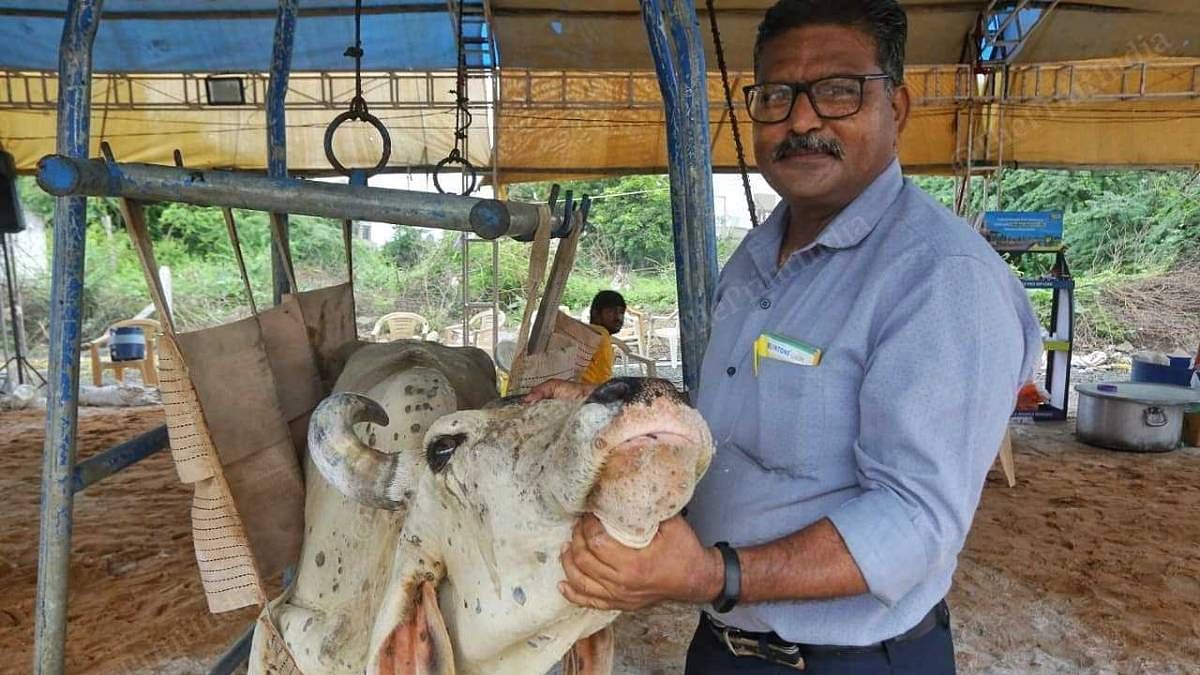
The isolation centre closest to the Anjar dispensary is set up on a plot of land owned by Kutch district’s BJP vice president, Bharatbhai Shah.
According to Parmar, most of the cattle that end up in the isolation centre are strays, who have borne the worst brunt of the outbreak.
Volunteers at the isolation centre claimed that no funds were being received from the government to run the isolation centres, and that donations from charitable trusts, local party leaders and gaurakshaks (cow vigilantes) were helping them attend to the affected cattle.
Pradeep Padhiyar, the veterinary officer of Anjar, has been overseeing the affected cattle and their treatment, guiding local volunteers on how to treat them.
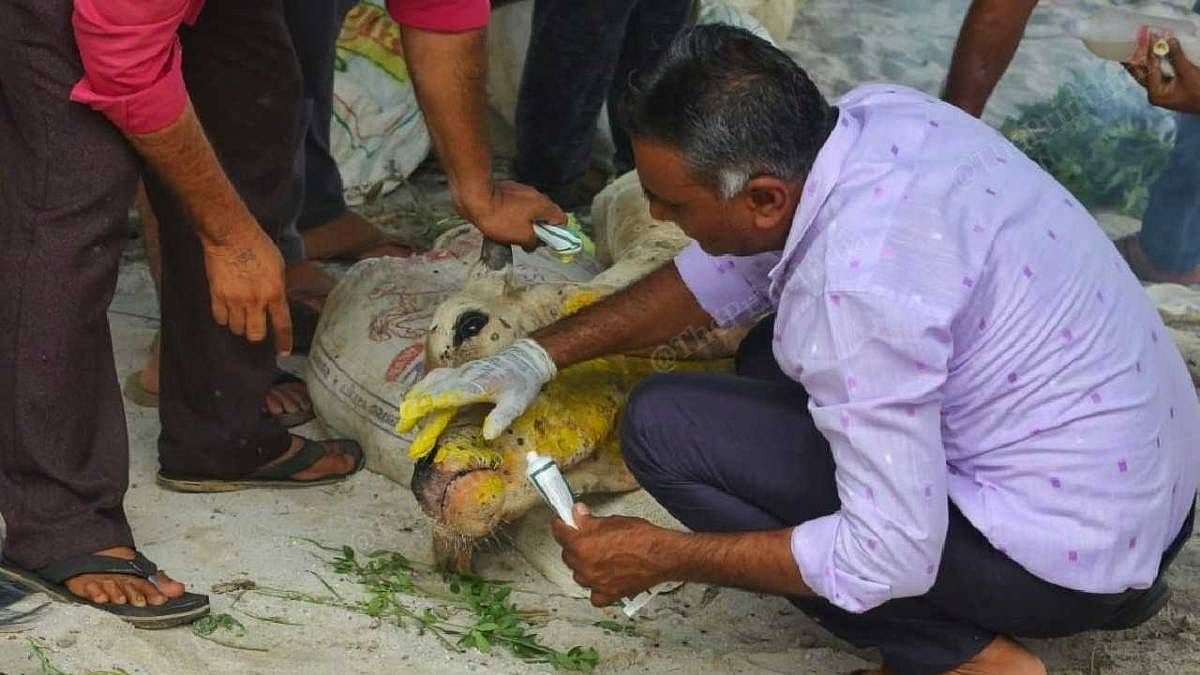
From the Anjar isolation centre, ThePrint accompanied Padhiyar and Parmar to a gaushala in Chandrani, which had started the first isolation ward in the taluka.
Chandrani is located at a distance of 22 kilometres from the dispensary in Anjar. Navigating traffic, rains, and a highway crowded with stray cattle (sick and healthy) slowing down traffic, the team has been regularly visiting and guiding volunteers at the isolation ward.
Here the team checks on the animals, provides medicines for those severely ill and also assists in physically moving the cattle away from the rain and puddles when required.
Dr Ranjeet Swami, who works with the Sarhad Cooperative located adjacent to the Chandrani gaushala, has been assisting Padhiyar for the past three weeks.
According to Swami, the gaushala has been dealing with lumpy skin disease cases for over a month. “We have been coming here every morning and evening to treat the affected cows.”
Fighting monsoon, scepticism
Nikhil Modi, a vet, has been deployed from the Banaskantha district — over 270 kilometres away — to help out Padhiyar’s team.
Modi told ThePrint that the higher-than-usual rainfall in Kutch this year has made matters worse for them.
“The rain and humid climate increase recovery time for the infected cattle. It has also increased the (number of) mosquitoes and flies in the region, which in turn increases the spread,” Modi said.
The lumpy skin disease virus is vector-borne, which means that disease can spread through flies and mosquitoes.
“It becomes very difficult to explain the disease and its treatment protocols to the villagers. Their families have been looking after cows for generations, so why would they trust doctors they have not met before?” added Modi.
Moreover, there is no specific treatment for the lumpy skin virus, Padhiyar said. “We are only managing symptoms. Whether the cow will recover will depend on what kind of nutrition it has been receiving in the past.”
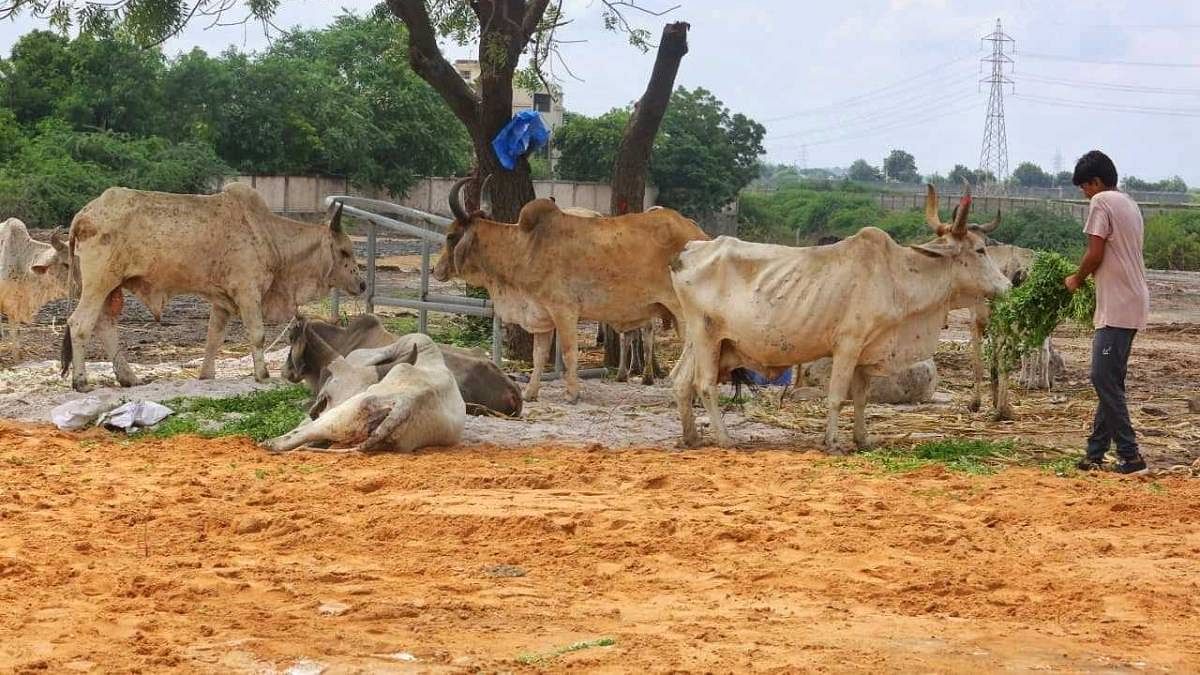
According to Thacker, however, the past two years’ Covid pandemic has played a huge role in making the remotest villages in the districts aware about viruses.
“We drew equivalents with Covid to explain the various aspects of the disease spread. Because of the experiences with Covid, many villages understood the meaning of isolation. They understood that vaccines work, and that it takes some time to build immunity,” Thacker said.
Drawing from the Covid practices, Parmar said that they even impose a Rs 100 fine on villagers letting infected cows out of their sheds.
Thacker however lamented that the department is understaffed. “The veterinary officer posts are usually vacant. We have not had more than 20 officers at a time for many years. People don’t want to be posted in the Kutch district because the distance required to be traversed every day makes the job challenging.”
This is the second in a six-part series on lumpy skin outbreak across Gujarat and Rajasthan.
(Edited by Poulomi Banerjee)
Also read: Hungry cows, hungry farmers — UP govt policy has led to cattle menace Yogi didn’t see coming


